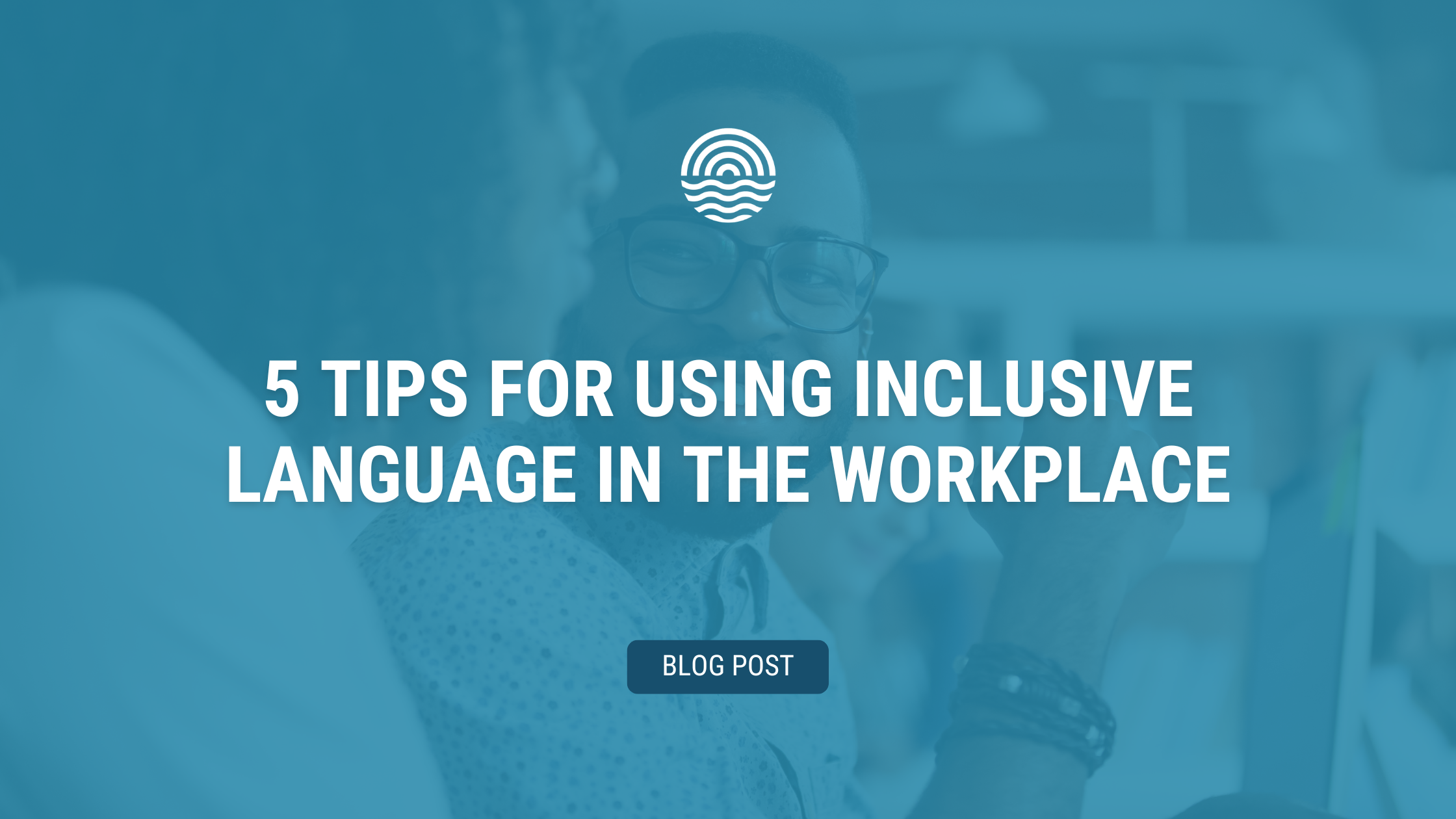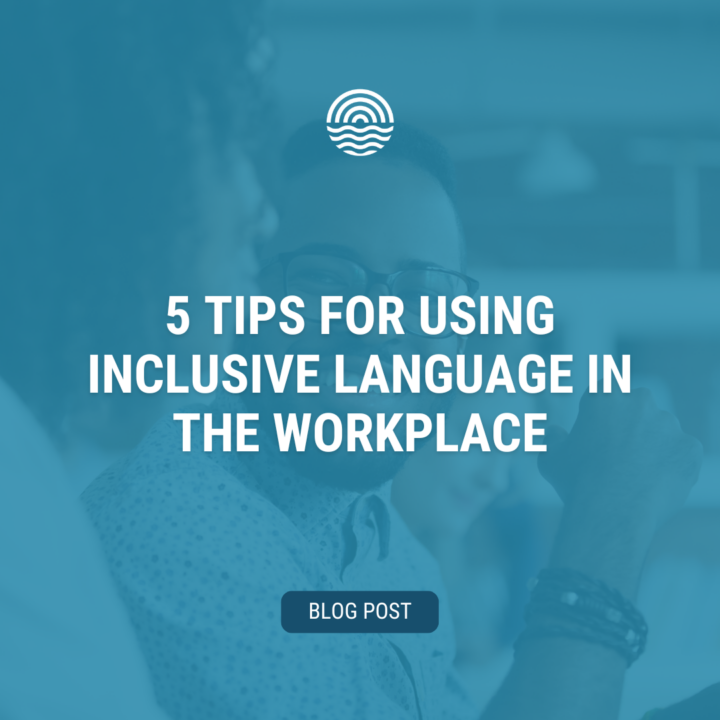
BLOG POST
5 Tips for Using Inclusive Language in the Workplace
Language is the foundation of communication, and in the workplace, it shapes how we interact, collaborate, and feel valued.
By adopting inclusive language, you send a powerful message: your organization values its employees’ unique identities and experiences. Ultimately, inclusive language creates a space where everyone feels respected, heard, and comfortable being themselves and contributing their ideas.
In this blog post, you’ll learn about using inclusive language in the workplace.
USING INCLUSIVE LANGUAGE IN THE WORKPLACE
1. Use person-first language
This approach emphasizes the person as an individual, not defined solely by a disability or other characteristics.
- Tips:
- Put the individual first, instead of highlighting characteristics: For example, instead of “disabled person,” use “person with a disability.”
- Remember: It’s always best to ask the person how they prefer to be identified.
2. Respect gender identity and pronouns
Using someone’s correct pronouns shows you respect their identity and creates a sense of belonging and validation for that individual.
- Tips:
- If you’re unsure of someone’s pronouns, use gender-neutral pronouns like they/them/theirs when referring to that person.
- Introduce yourself with your pronouns (e.g., “Hi, I’m [Name], and my pronouns are they/them”).
- Use someone’s preferred pronouns consistently (he/him, she/her, they/them).
- Avoid assuming pronouns based on appearance.
3. Be mindful of ability terminology
Words can empower or limit. Emphasize what a person can do, instead of focusing on what they can’t.
- Tips:
- Focus on abilities rather than limitations: For example, instead of saying “She can’t see,” say “She uses a screen reader to access information.”
- Another example: Instead of “confined to a wheelchair,” use “uses a wheelchair for mobility.
4. Avoid biased language
Biased language can unintentionally reinforce stereotypes and make people feel alienated.
- Tips
- Avoid “you guys” for everyone, use “folks” or “team” instead.
- Don’t refer to someone as “young” or “old” in a derogatory way.
- Avoid stereotypes and generalizations about race or ethnicity.
- Avoid perpetuating negative stereotypes about mental health conditions. For example, instead of saying “The weather is insane today!” try “The weather is pretty extreme!”.
5. Ensure Inclusive Job Postings
Inclusive language attracts a wider talent pool and reflects a company’s commitment to diversity.
- Tips
- Use language that is both gender-neutral and clear to understand, and avoid industry-specific jargon.
- Use gender-neutral language for qualifications (e.g., “strong leadership skills” instead of “assertive”).
- Highlight your company’s commitment to DEI.
- Use clear and concise language to avoid excluding qualified candidates.
Final Thoughts
Incorporating these simple yet impactful tips into your daily interactions fosters a workplace culture of respect, belonging, and psychological safety. By consciously choosing inclusive language, we empower all voices to be heard and valued.
Remember, language is a powerful tool, and by wielding it thoughtfully, we can create a work environment where everyone can thrive.
Questions about driving meaningful DEI change in your business? We can help!


